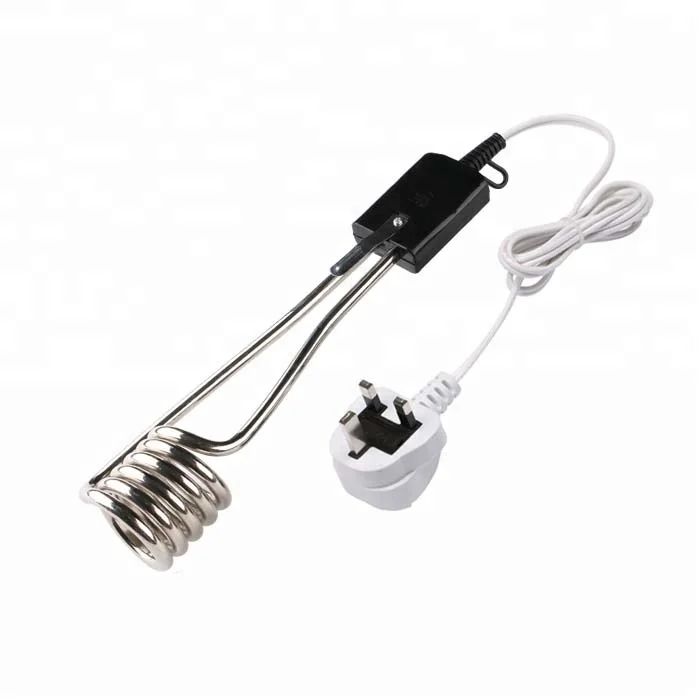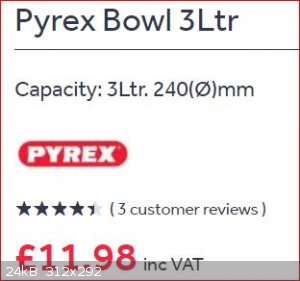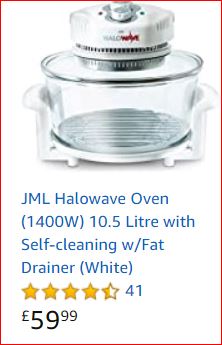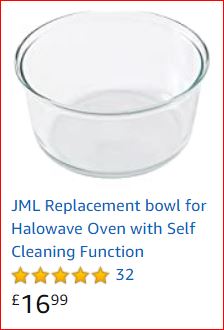Belowzero
Hazard to Others
  
Posts: 173
Registered: 6-5-2020
Location: Member Is Offline
Member Is Offline
|
|
Soda Lime glass
Hello SM,
For a purification project I am considering using a large soda lime glass vessel, I don't own any real lab glass larger than a 2L erlemeyer
(expensive!!) so I am considering using a large glass vase.
Now I know lime glass has its problems especially when it comes to thermo shocks, another issue might be a relatively thin wall and a few kg's of
liquid, this could introduce structural problems.
Now the question is can this be done responsibly or is it a stupid idea to begin with?
I will take precautions to not thermo shock the glass (very slow heating and cooling)
My plan is to first test the vessel with boiling water to see if it will hold , I will try and move it too to see if it can handle the mechanical
stress before I use it for the actual purpose.
Or perhaps someone has a suggestion for a vessel that can handle heating and has chemical resistance to some extend , nothing too corrosive though.
Any input is appreciated!
[Edited on 30-6-2020 by Belowzero]
|
|
|
Tsjerk
International Hazard
    
Posts: 3022
Registered: 20-4-2005
Location: Netherlands
Member Is Offline
Mood: Mood
|
|
The vase should be fine as long as you don't heat shock it or put very heavy liquids in it.
An alternative could be these plastic jars the sell juice in. I don't know what you want to put in, but for recycling purposes there usually is a
triangular symbol with a couple of letters on the bottom of the jar. Probably it will say PE, which means polyethylene. PE is fine for most purposes.
|
|
|
draculic acid69
International Hazard
    
Posts: 1371
Registered: 2-8-2018
Member Is Offline
|
|
Thing about soda glass is it has to be even thickness.a vase with a cm thick bottom and .5mm sides isn't going to be able to take the heat.
|
|
|
RogueRose
International Hazard
    
Posts: 1585
Registered: 16-6-2014
Member Is Offline
|
|
I would highly suggest not using this glass, I've had some very messy mistakes by using it. Plastic is better, if you can use it.
What are you trying to do? Can you find some old coffee pots? Those are often borosillicate glass. Can you do it in a few batches?
What are you doing that this has to be hot?
Finally, what is the cost of all this? Would it be more expensive to lose the value of what you are processing than it would be to get a proper flask
or beaker?
|
|
|
Belowzero
Hazard to Others
  
Posts: 173
Registered: 6-5-2020
Location: Member Is Offline
Member Is Offline
|
|
Quote: Originally posted by Tsjerk  | The vase should be fine as long as you don't heat shock it or put very heavy liquids in it.
An alternative could be these plastic jars the sell juice in. I don't know what you want to put in, but for recycling purposes there usually is a
triangular symbol with a couple of letters on the bottom of the jar. Probably it will say PE, which means polyethylene. PE is fine for most purposes.
|
I can't imagine those being able to handle heating, can they?
Quote: Originally posted by RogueRose  | I would highly suggest not using this glass, I've had some very messy mistakes by using it. Plastic is better, if you can use it.
What are you trying to do? Can you find some old coffee pots? Those are often borosillicate glass. Can you do it in a few batches?
What are you doing that this has to be hot?
Finally, what is the cost of all this? Would it be more expensive to lose the value of what you are processing than it would be to get a proper flask
or beaker?
|
I collect old coffee pots for that reason 
It is possible to split up the batches but it will be tedious.
Plastic would be possible but since indeed heat is involved I would have to find an alternative way of heating, a hotplate will likely destroy even
high quality HDPE.
I have one of these

Would have to find away of protecting the heating element , it will probably corrode/rust away quick.
[Edited on 30-6-2020 by Belowzero]
|
|
|
wg48temp9
National Hazard
   
Posts: 761
Registered: 30-12-2018
Location: not so United Kingdom
Member Is Offline
|
|
What about Pyrex kitchenware, jugs or bowls.
For example

In the UK its probably boro Pyrex in America its probably heat treated soda lime glass.
I am wg48 but not on my usual pc hence the temp handle.
Thank goodness for Fleming and the fungi.
Old codger' lives matters, wear a mask and help save them.
Be aware of demagoguery, keep your frontal lobes fully engaged.
I don't know who invented mRNA vaccines but they should get a fancy medal and I hope they made a shed load of money from it.
|
|
|
draculic acid69
International Hazard
    
Posts: 1371
Registered: 2-8-2018
Member Is Offline
|
|
Pyrex kitchen ware is your next best bet.it takes heat well enough. A vase probably won't
|
|
|
Belowzero
Hazard to Others
  
Posts: 173
Registered: 6-5-2020
Location: Member Is Offline
Member Is Offline
|
|
Very nice suggestion, it'll come in handy for other purposes too.
Thanks.
*edit*
All I can find near me is max 1L or an ovendish ~3L.
Anything bigger is all plastic.
[Edited on 30-6-2020 by Belowzero]
|
|
|
woelen
Super Administrator
        
Posts: 7976
Registered: 20-8-2005
Location: Netherlands
Member Is Offline
Mood: interested
|
|
Another option is to split the process in smaller batches, so that you can use smaller glassware. It is more work, but you spread the risk of failure
and loss of all your reagents and you reduce the risk of big accidents, involving liters of flammable/toxic liquids.
|
|
|
SWIM
National Hazard
   
Posts: 970
Registered: 3-9-2017
Member Is Offline
|
|
Still not at all sure what conditions this container must withstand.
A more detailed explanation would help people to give you good advice.
From what I've read it seems stainless steel won't do, which is too bad because stainless vessels like big pots for commercial food preparation or
steam tray parts can sometimes be scrounged up cheap.
Would whatever you're doing corrode ceramics?
There is cheap decorative porcelain out there that takes heat and acids quite well I've heard.
There are also basins and vessels that have a ceramic lining on metal.
Things like that might be found as old used goods and bought cheaply with a little luck.
As for heating in a plastic bucket: If that heating element of yours can fit in the neck of your big Erlenmeyer Then what if you filled the Erlenmeyer
with oil and stuck the heating element in there and used the whole thing as a big heating element?
|
|
|
Herr Haber
International Hazard
    
Posts: 1236
Registered: 29-1-2016
Member Is Offline
Mood: No Mood
|
|
Quote: Originally posted by Belowzero  |
Now the question is can this be done responsibly or is it a stupid idea to begin with?
I will take precautions to not thermo shock the glass (very slow heating and cooling)
[Edited on 30-6-2020 by Belowzero] |
That's how I do it with my 3 liters reactor in which I dissolve silver to make sure all the acid has reacted with an excess silverware.
I cant say I'm not afraid when I do it. Just imagine having to "clean" 3 liters of silver nitrate solution.
I start around 30 degrees then gradually go up to 100 on the hotplate (60 inside the reactor)
The boro glass idea from cookware is a good idea if it's real Pyrex.
Because if it's just thick soda glass the problem will just be worst.
The spirit of adventure was upon me. Having nitric acid and copper, I had only to learn what the words 'act upon' meant. - Ira Remsen
|
|
|
wg48temp9
National Hazard
   
Posts: 761
Registered: 30-12-2018
Location: not so United Kingdom
Member Is Offline
|
|
Quote: Originally posted by Herr Haber  |
The boro glass idea from cookware is a good idea if it's real Pyrex.
Because if it's just thick soda glass the problem will just be worst. |
The American made Pyrex, which is soda lime glass, is heat treated to make it tougher but its still not as thermal shock resistant as boro Pyrex
according to the following consumer tests: https://www.consumerreports.org/video/view/home-garden/safet...
PS: You can sometimes find used or broken IR ovens that have 10L glass bowls, I don't know if the bowls are boro pyrex or not but they seem to be
tough. Replacement bowls are only £17 WOW, I guess delivery will be significant.


[Edited on 7/1/2020 by wg48temp9]
I am wg48 but not on my usual pc hence the temp handle.
Thank goodness for Fleming and the fungi.
Old codger' lives matters, wear a mask and help save them.
Be aware of demagoguery, keep your frontal lobes fully engaged.
I don't know who invented mRNA vaccines but they should get a fancy medal and I hope they made a shed load of money from it.
|
|
|
Refinery
Hazard to Others
  
Posts: 371
Registered: 17-2-2014
Member Is Offline
Mood: Still
|
|
PYREX is borosilicate, being a trademark. Pyrex is tempered soda glass.
I have used common glass vessels for various reactions, including a 10L punch bowl with tap as a settling tank for fine particle contaminated liquids.
You shall be very vary of any temperature differences, though, and hot or boiling - or very cold liquids are a no-go.
If you absolutely have to use substituted glass vessels, you could either wrap your glass with PE packing foil and then put it in a PE trash bag. In
case of shattering, the packing foil will prevent sharp glass cuts and plastic bag keeps liquids in. You prevent spill, and you can recover your
liquid. This is by no means an idiot-proof, but use common sense here.
You could also see if you could just use ordinary PE plastic buckets for your reactions. They come in cheap and in all sizes, 5 to 10 liters and all
the way up to 200L. Polyethene withstands huge range of stuff, unless it's hot or exceedingly reactive. It can handle most solvents and normal temp
sulfuric acid with no issues. I have done many volumetric reactions, like displacement reactions in them with good success and I also store all kind
of stuff in them, with lids.
Distilling large quantities of solvents? Just feel free to use dropping funnel to add more as distilling proceeds. A theoretic example: 10 liter batch
size with 2 liters of reactants and balance of solvent with 5L flask - start with 3 liters, concentrate to 1, add 2 liters more and repeat until you
only have the concentrate left. If you don't want thermal fluctuations, drop the liquid gradually.
[Edited on 7-7-2020 by Refinery]
|
|
|
Belowzero
Hazard to Others
  
Posts: 173
Registered: 6-5-2020
Location: Member Is Offline
Member Is Offline
|
|
Quote: Originally posted by Refinery  | PYREX is borosilicate, being a trademark. Pyrex is tempered soda glass.
I have used common glass vessels for various reactions, including a 10L punch bowl with tap as a settling tank for fine particle contaminated liquids.
You shall be very vary of any temperature differences, though, and hot or boiling - or very cold liquids are a no-go.
If you absolutely have to use substituted glass vessels, you could either wrap your glass with PE packing foil and then put it in a PE trash bag. In
case of shattering, the packing foil will prevent sharp glass cuts and plastic bag keeps liquids in. You prevent spill, and you can recover your
liquid. This is by no means an idiot-proof, but use common sense here.
You could also see if you could just use ordinary PE plastic buckets for your reactions. They come in cheap and in all sizes, 5 to 10 liters and all
the way up to 200L. Polyethene withstands huge range of stuff, unless it's hot or exceedingly reactive. It can handle most solvents and normal temp
sulfuric acid with no issues. I have done many volumetric reactions, like displacement reactions in them with good success and I also store all kind
of stuff in them, with lids.
Distilling large quantities of solvents? Just feel free to use dropping funnel to add more as distilling proceeds. A theoretic example: 10 liter batch
size with 2 liters of reactants and balance of solvent with 5L flask - start with 3 liters, concentrate to 1, add 2 liters more and repeat until you
only have the concentrate left. If you don't want thermal fluctuations, drop the liquid gradually.
[Edited on 7-7-2020 by Refinery] |
Thanks that is very useful.
After breaking a 2L borosilicate beaker recently and having 1.5L of hot solution making a huge mess out of my bench and floor I decided not to use
lime glass for heating purposes.
This time I was lucky in the sense that this wasn't anything too hazardous, luck is a poor strategy.
I'll order some PE containers, the punch bowl is a nice idea too.
|
|
|
Fyndium
International Hazard
    
Posts: 1192
Registered: 12-7-2020
Location: Not in USA
Member Is Offline
|
|
A video comparing pyrex and PYREX. United Cheapos have deduced into tempered soda lime, which doesn't stand a chance for any practical use, while
Europe still remains boro.
https://www.youtube.com/watch?v=2kxTtnPGHSo
I haven't yet given any rough treatment on PYREX pots, but they appear of decent quality. They come in handy for heating bath bowls, evaporating
dishes and in some instances as reaction bowls for low hazard stuff.
|
|
|
macckone
International Hazard
    
Posts: 2159
Registered: 1-3-2013
Location: Over a mile high
Member Is Offline
Mood: Electrical
|
|
The pyrex trademark was sold and is now mostly used on tempered glass for baking products.
Unless it says borosilicate 3.3, assume it is soda lime glass.
As for the OP question,
You can but probably should not boil liquids in soda lime glass.
In the canning process for most juices a water bath is used to heat the container and hold it at 100C or higher.
The juice is separately pasturized and then sprayed into the cool sanitary container.
The trick is not exceeding the temperature differential and preventing disaster if you do.
1) use an oil bath
2) duck tape is your friend. wrap the container in duck tape before putting it in the oil bath. This reduces the temperature gradient and keeps the
container mostly intact if it cracks.
3) heat slowly and don't push the distillation too hard
This will work with a juice jar.
Using it with a vase or water carboy, I have not tried.
The glass water carboys are traditionally sanitized using water so I would assume the same methods would work.
Polycarbonate carboys are sanitized with a chemical sanitizer (chlorine dioxide, ozone, sodium hypochlorite, etc).
|
|
|